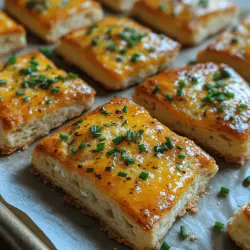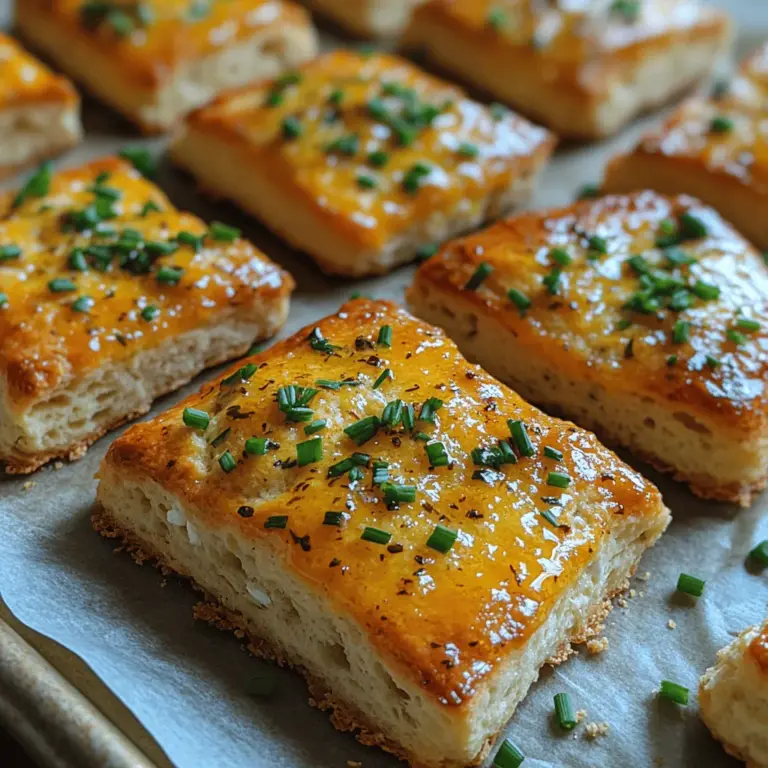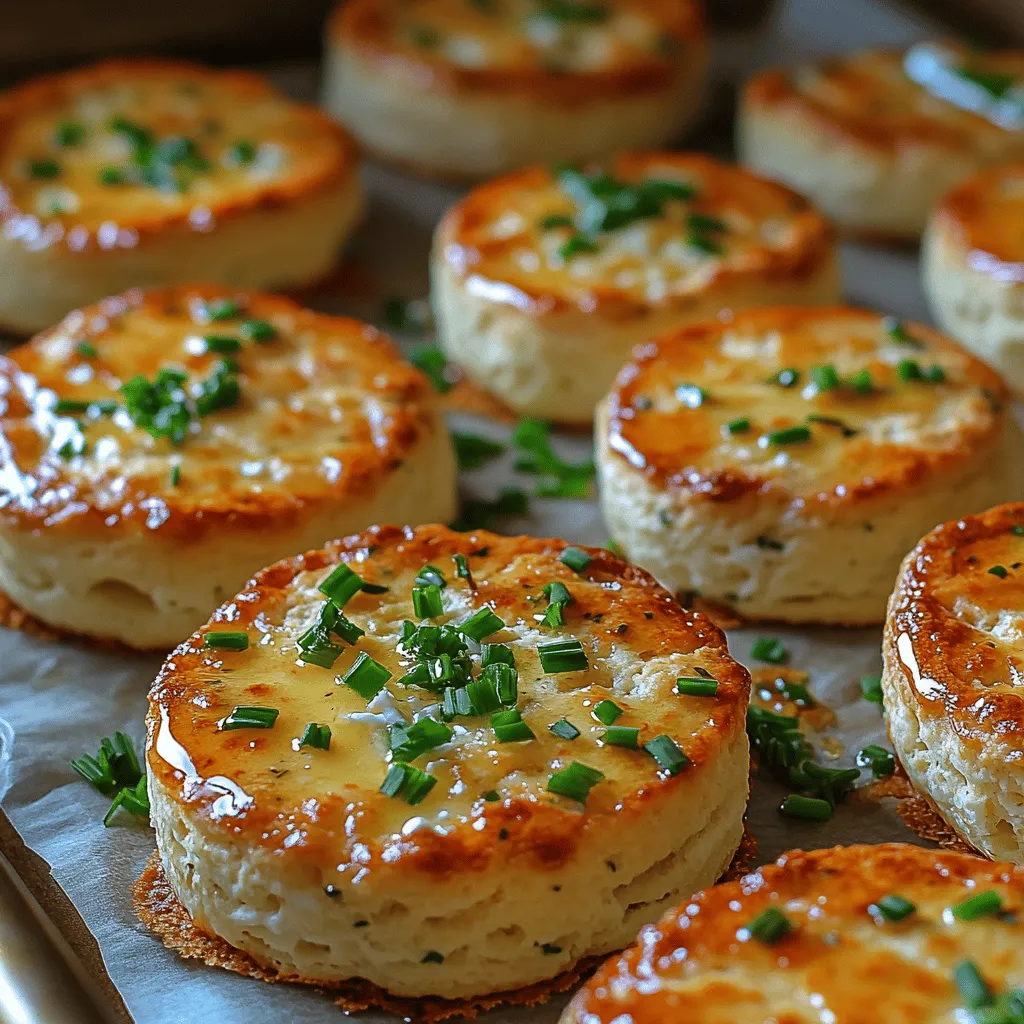Scones are one of the most beloved baked goods, cherished for their versatility and delightful textures. Traditionally served with tea, these flaky pastries can be sweet or savory, making them an ideal treat for any time of day. Among the myriad of scone variations, savory ricotta herb scones stand out for their rich flavors and unique ingredient combinations. Infused with fresh herbs and creamy ricotta cheese, these scones offer a satisfying bite that can easily elevate your breakfast, brunch, or snack game.
The Allure of Savory Scones
In recent years, savory scones have gained significant popularity in culinary circles, moving beyond their traditional sweet counterparts. This shift reflects a broader trend of incorporating unexpected flavors into baked goods, allowing for greater creativity in the kitchen. The savory scone is a perfect example of this culinary evolution, serving as a canvas for various herbs, cheeses, and additional flavor enhancers.
Not only do savory scones taste divine, but they also provide a nutritious option. By incorporating fresh herbs and cheese, these baked goods are enriched with vitamins and minerals, making them a guilt-free indulgence. Fresh herbs like chives, parsley, and thyme not only add vibrant flavors but also pack a nutritional punch, providing antioxidants and essential nutrients. Cheese, particularly ricotta and Parmesan, enhances the scone’s texture while contributing protein and calcium.
Savoring a warm, savory ricotta herb scone is not just about satisfying hunger; it’s about enjoying a delightful blend of flavors and textures, all while reaping the benefits of wholesome ingredients.
Understanding the Ingredients
To master the art of making savory ricotta herb scones, it’s crucial to understand the role of each ingredient in the recipe. Here’s a detailed analysis of the key components that contribute to the scone’s overall flavor and texture:
All-Purpose Flour
All-purpose flour serves as the primary structure for your scones. It provides the necessary gluten to help the scones rise and hold their shape during baking. The right flour ensures that your scones are neither too dense nor too crumbly, striking the perfect balance between tenderness and stability.
Baking Powder and Baking Soda
These two leavening agents are essential for achieving that light and fluffy texture that everyone loves in a scone. Baking powder works by releasing carbon dioxide when combined with moisture, causing the dough to rise. Baking soda, on the other hand, needs an acid (such as buttermilk or lemon juice) to activate its leavening properties. Together, they help create a delicate crumb structure that makes your scones irresistibly light.
Ricotta Cheese
Ricotta cheese is the star of this savory scone recipe, lending its creamy texture and mild flavor to the dough. Unlike other cheeses, ricotta has a higher moisture content, which helps ensure the scones remain moist and tender. Its subtle flavor allows the herbs and other ingredients to shine while still providing richness to each bite.
Unsalted Butter
The use of cold, unsalted butter is critical in achieving that coveted flaky texture. When incorporated into the flour mixture, the butter creates small pockets that expand during baking, resulting in a light and airy scone. Using unsalted butter also gives you better control over the saltiness of the final product, allowing you to season the dough to your preference.
Fresh Herbs
Fresh herbs are what truly elevate savory ricotta herb scones. Chives, parsley, and thyme each bring their own unique flavor profiles to the mix. Chives offer a mild onion taste, parsley adds a fresh and slightly peppery note, while thyme contributes earthy and aromatic qualities. The combination of these herbs not only enhances the flavor but also adds a burst of color to your scones.
Parmesan Cheese
Parmesan cheese introduces a sharp, nutty flavor that beautifully complements the other ingredients. Its robust taste enhances the overall savory profile of the scones, making each bite a delight. Additionally, Parmesan adds a touch of saltiness, which balances the richness of the ricotta and butter.
Lemon Zest
A hint of lemon zest brightens the dish and adds a refreshing lift to the otherwise rich flavors. The citrusy notes help to cut through the creaminess of the ricotta and butter, providing a well-rounded flavor that keeps you coming back for more.
Optional Honey
While honey is not a necessary ingredient, it can be a lovely addition for those who enjoy a hint of sweetness in their savory baked goods. A small drizzle of honey can enhance the complexity of flavors, creating a delightful contrast to the savory elements at play.
Step-by-Step Guide to Making Savory Ricotta Herb Scones
Before diving into the actual preparation of your savory ricotta herb scones, it is essential to organize your kitchen and gather all necessary equipment. This ensures a smooth baking process and helps prevent any last-minute scrambles.
Prepping Your Kitchen
Start by preheating your oven to 400°F (200°C) to ensure it reaches the ideal temperature for baking before your scones are ready. Line a baking sheet with parchment paper or a silicone baking mat to prevent sticking and facilitate easy cleanup. Gather your mixing bowls, measuring cups, and any tools you may need such as a whisk, pastry cutter, and a spatula.
Having everything at your fingertips will allow for a more enjoyable baking experience, freeing you to focus on creating delicious scones rather than searching for misplaced ingredients.
Mixing the Dry Ingredients
In a large mixing bowl, begin by whisking together the all-purpose flour, baking powder, baking soda, and a pinch of salt. It’s crucial to mix these dry ingredients thoroughly to ensure even distribution of the leavening agents. Proper measurement is equally important in baking; using a kitchen scale can help you achieve precise amounts, ensuring consistent results each time you make these scones.
Incorporating the Butter
Next, it’s time to cut the cold, unsalted butter into the flour mixture. Using a pastry cutter or your fingers, work the butter into the flour until the mixture resembles coarse crumbs. This step is crucial for achieving that flaky texture. You want to see small pieces of butter throughout the mixture, as they will create steam during baking, resulting in beautifully layered scones.
Once you reach the desired consistency, it’s time to move on to the wet ingredients, which will bring your scone dough together.
—
This introduction and the initial steps provide a solid foundation for your savory ricotta herb scones journey. Stay tuned for the continuation of this delightful recipe, where we’ll delve into combining the wet ingredients and the baking process that will lead you to a perfect batch of scones.
Mixing the Ricotta, Egg, and Honey
In the process of making savory ricotta herb scones, the foundation begins with mixing ricotta, egg, and honey. This mixture not only serves as a binding agent but also plays a pivotal role in enhancing the moisture and flavor of the scones. Ricotta cheese, with its creamy texture, provides a rich base while contributing protein and calcium. The egg adds structure, helping the scones rise and develop a tender crumb. Honey, on the other hand, introduces a subtle sweetness that balances the savory elements of the herbs and cheese, elevating the flavor profile.
When combining these ingredients, it’s essential to whisk them together until smooth and well incorporated. This ensures that the ricotta is evenly distributed throughout the dough, preventing any clumps that could affect the texture of the final product. The result is a creamy, luscious mixture that will infuse the scones with both moisture and richness.
Adding the Flavor Elements
Next, we move on to integrating the flavor elements—herbs and cheese. Fresh herbs such as chives, thyme, or rosemary are essential in this recipe, as they infuse the scones with vibrant flavors that complement the creamy ricotta. To incorporate these herbs effectively, finely chop them and fold them into the ricotta mixture, ensuring they are evenly dispersed.
Cheese, such as sharp cheddar or Parmesan, adds a savory depth to the scones. Grate the cheese and mix it in with the herbs, allowing the flavors to meld beautifully before adding this mixture to the wet ingredients. The combination of herbs and cheese not only enhances the flavor profile but also contributes to a wonderful aroma during baking, making your kitchen feel inviting and warm.
Bringing It All Together
Once your wet mixture is ready, it’s time to bring it together with the dry ingredients. In a large bowl, combine your flour, baking powder, and salt. Make a well in the center of the dry mixture and gently pour in the ricotta-herb mixture. Using a spatula or a wooden spoon, fold the ingredients together, being careful not to overwork the dough. Overmixing can lead to tough scones, so aim for a slightly sticky yet cohesive dough. It should hold together without falling apart but still feel soft to the touch.
If the dough feels too dry, a splash of milk or a bit more ricotta can help achieve the desired consistency. The goal is a dough that will yield light and fluffy scones, so don’t hesitate to adjust as needed.
Shaping and Cutting the Scones
Now that you have your dough ready, it’s time to shape and cut the scones. Turn the dough out onto a lightly floured surface and gently pat it into a disk about 1 inch thick. The thickness is crucial as it influences both the baking time and the final texture of the scones. Using a sharp knife or a bench scraper, cut the disk into wedges—typically, eight wedges work well.
When handling the dough, be gentle. The more you handle it, the denser the scones may become. Aim to keep the dough light and airy, which will reflect in the final product. If you prefer a more uniform shape, you can also use a biscuit cutter to create round scones; just be sure to gather and re-roll any scraps to minimize waste.
Final Preparations for Baking
Before baking, there are a couple of final preparations to ensure your scones come out beautifully. Place the cut scones on a parchment-lined baking sheet, making sure to leave enough space between them to allow for expansion during baking. This spacing is vital as it helps the scones rise evenly and develop a nice crust.
For an appealing finish, brush the tops of the scones with an egg wash made from a beaten egg mixed with a tablespoon of water. This will give the scones a golden-brown color and a slight sheen. As they bake, the egg wash helps form a beautiful crust while keeping the insides tender.
Baking to Perfection
Preheat your oven to 400°F (200°C). Once the oven is hot, place your baking sheet in the center and bake the scones for about 15-20 minutes. The exact time will depend on your oven and the size of your scones. Look for a golden-brown color on top and a slight rise that indicates they are fully cooked.
To test for doneness, insert a toothpick into the center of a scone. If it comes out clean or with just a few crumbs, your scones are ready. If there’s wet dough on the toothpick, give them a few more minutes in the oven, checking frequently to avoid overbaking.
Cooling and Serving Suggestions
After removing the scones from the oven, allow them to cool on the baking sheet for about 5 minutes before transferring them to a wire rack. Cooling them on a wire rack helps prevent moisture buildup, ensuring that they maintain their delightful texture.
These savory ricotta herb scones can be enjoyed warm or at room temperature. They are incredibly versatile and can be served plain, or you might consider pairing them with a dollop of butter, a smear of cream cheese, or even a selection of jams. For a more decadent touch, serve them alongside a charcuterie board featuring cured meats and additional cheeses. Their delightful flavor makes them a perfect accompaniment to soups and salads, or they can stand out on their own as a savory snack.
Nutritional Benefits of Savory Ricotta Herb Scones
These scones are not only delicious but also pack a nutritional punch. Ricotta cheese is a great source of protein and calcium, essential for bone health and muscle maintenance. The addition of fresh herbs adds vitamins and minerals, enhancing the overall health benefits of the scones. Whole wheat flour can be used instead of all-purpose flour for added fiber, making these scones a more wholesome option.
In moderation, these scones can fit beautifully into a balanced diet. They make for a satisfying breakfast or brunch item, a delightful snack, or an impressive addition to any meal. By incorporating nutrient-rich ingredients, you can indulge in a tasty treat while supporting your overall health.
Creative Variations on the Recipe
One of the best aspects of savory ricotta herb scones is their versatility. Feel free to experiment with different herbs and cheeses to suit your taste. Consider using dill and feta for a Mediterranean twist, or try basil and mozzarella for an Italian flair. Adding spices like garlic powder or onion powder can also deepen the flavor, while incorporating sun-dried tomatoes or olives can add a delightful touch.
For those looking to elevate their scones further, consider adding nuts like walnuts or pine nuts for crunch or even diced vegetables such as bell peppers or spinach for added nutrition. The possibilities are endless, making it easy to customize this recipe to your liking or to suit different occasions.
Conclusion
Savory ricotta herb scones are a delightful addition to any culinary repertoire, marrying rich flavors with a light, flaky texture. By following the steps outlined above, you can create scones that are not only visually appealing but also bursting with flavor. Their versatility allows them to shine in various settings, whether served at brunch, as an appetizer, or simply enjoyed with a cup of tea.
Encouraging experimentation, these scones offer bakers of all levels a chance to play with flavors and ingredients. So gather your ingredients, embrace the joy of baking, and enjoy the delightful experience of creating your very own savory ricotta herb scones.


